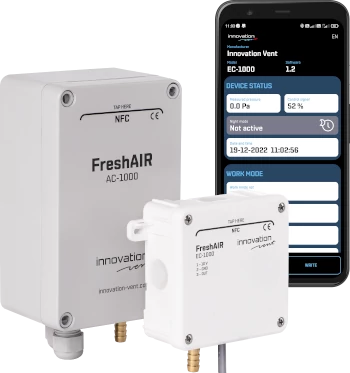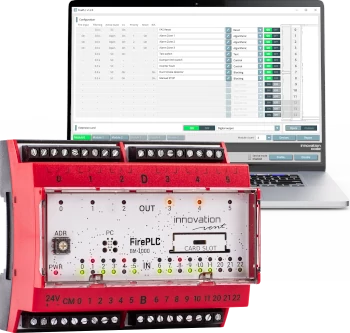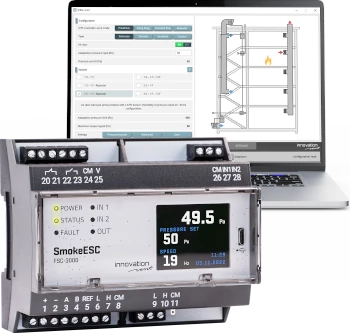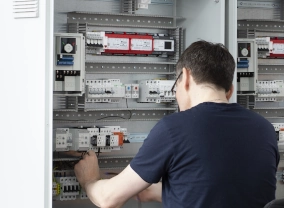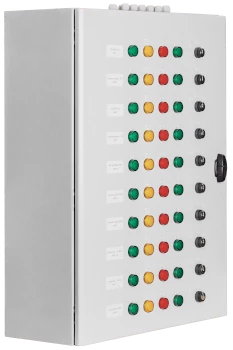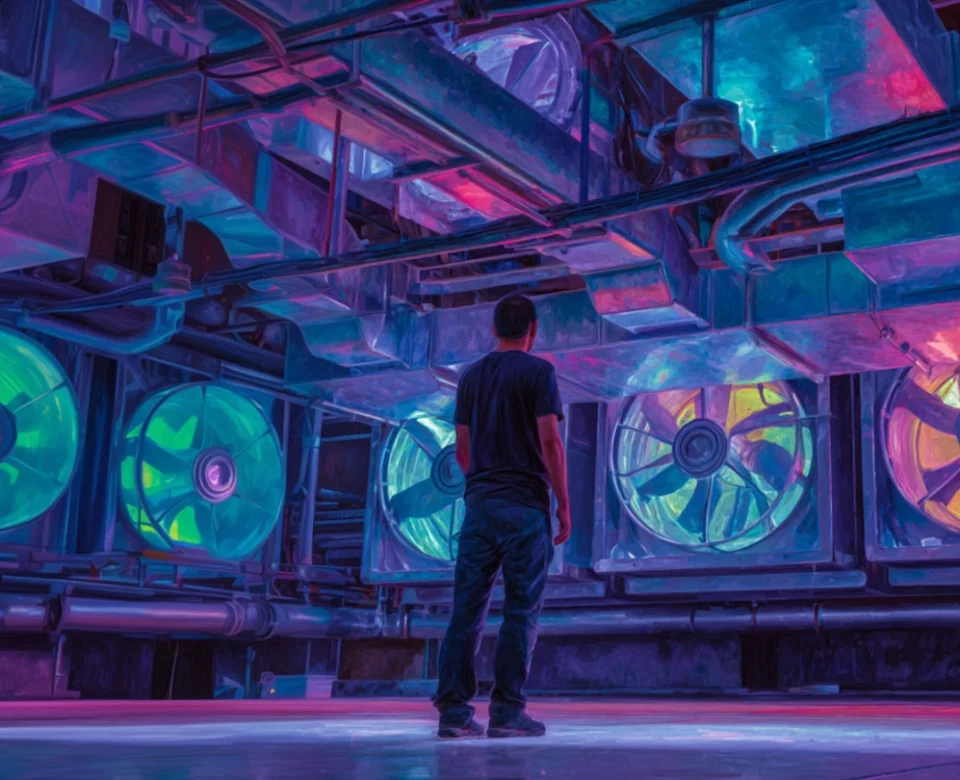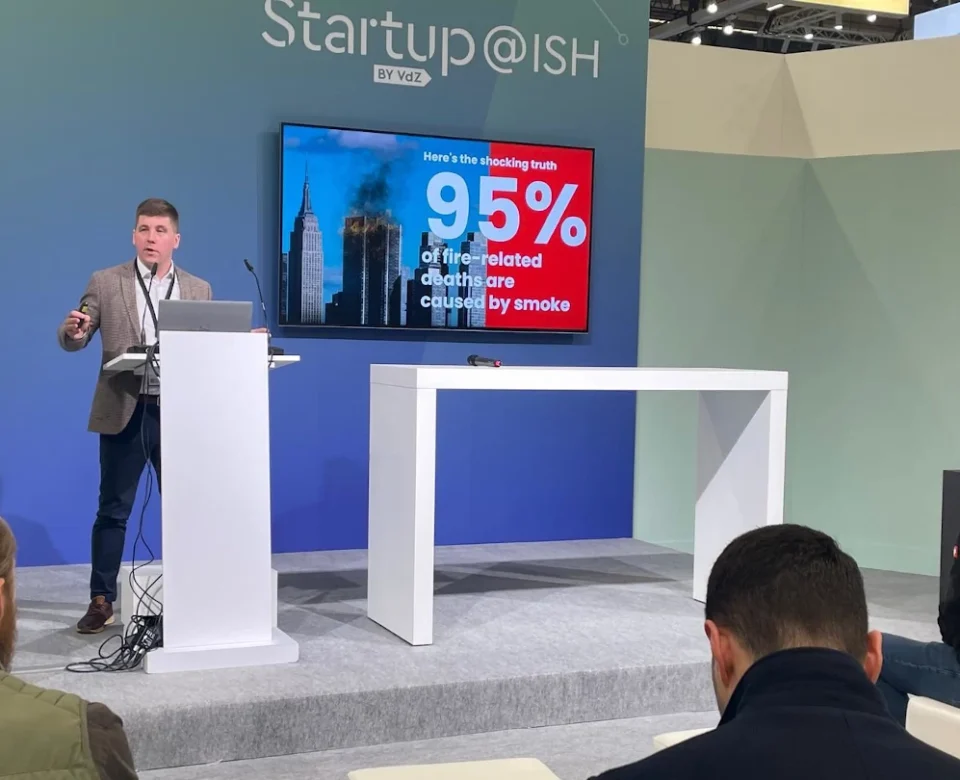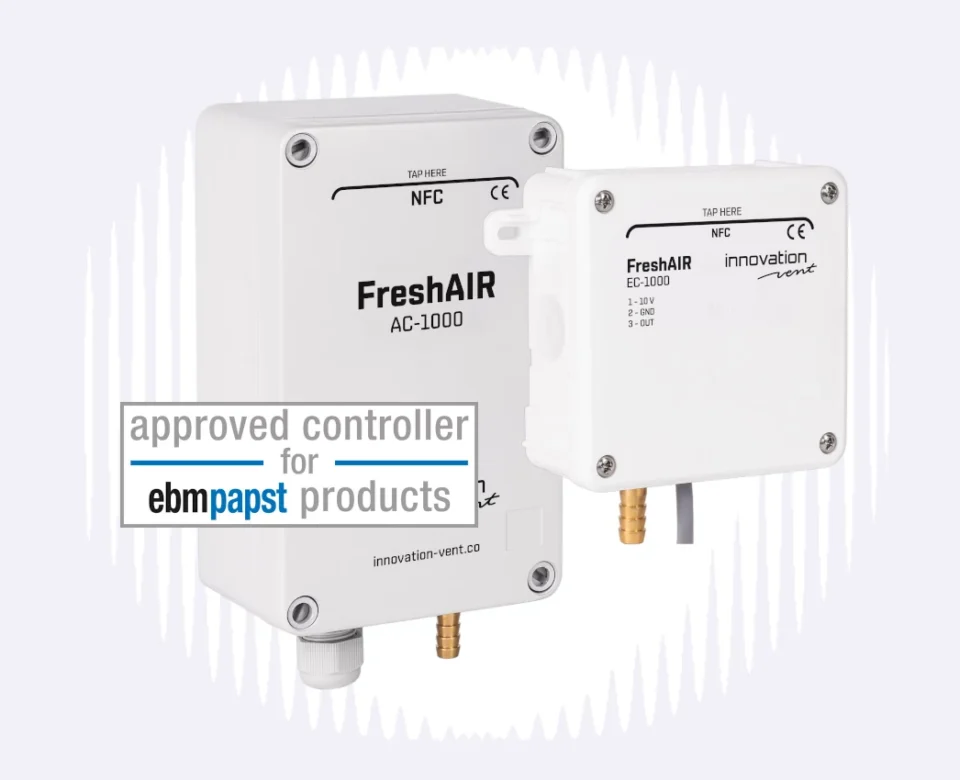
See our vision at ISH 2025! The Innovation Vent Team in Frankfurt!
2025-03-31
Measuring low pressures in HVAC and fire ventilation – accuracy without zero drift
2025-08-20
Ventilation systems in buildings, both for everyday use and fire safety, are becoming increasingly complex. Modern facilities require maintaining stable airflow and air pressure parameters under variable conditions—from standard operation to critical situations such as fire. Until recently, ensuring proper controller operation required the tedious process of manually tuning a PID algorithm. Today, this is increasingly being replaced by an intelligent adaptive algorithm, which, as in the case of FreshAIR controllers, eliminates the need for manual tuning.
What you will learn:
- Why PID tuning is difficult and costly in ventilation systems
- How adaptive algorithms work and respond to changing conditions
- Practical benefits and applications of self-optimizing controllers
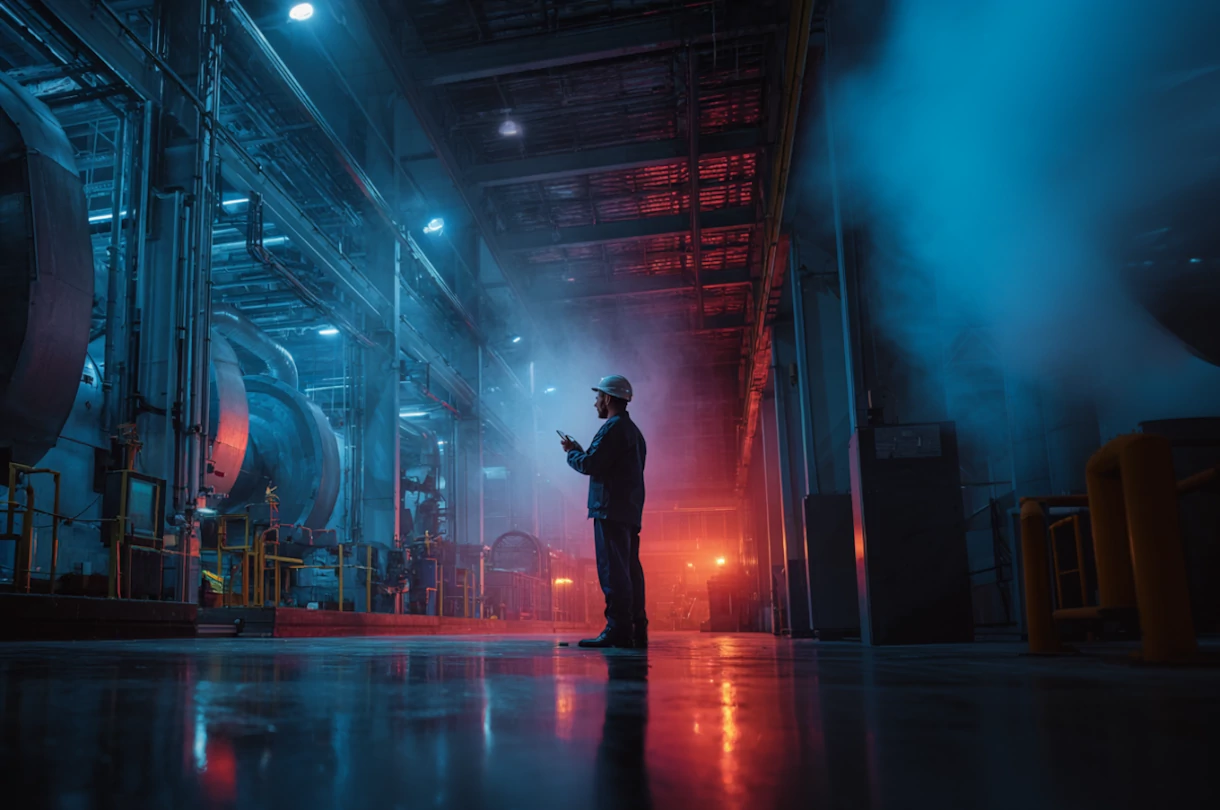
Why is PID tuning needed at all?
The classic PID (Proportional-Integral-Derivative) algorithm is a fundamental control method used across many automation industries. Its purpose is to minimize the error between a setpoint and a measured value by appropriately adjusting the control signal. It sounds simple, but in practice, it requires selecting three parameters:
- P – proportional gain,
- I – integral time,
- D – derivative time.
Every ventilation system has its own specifics: different duct resistances, different fan characteristics, variable flow depending on load. Therefore, the PID controller must be tuned to avoid oscillations, delays, or sluggish responses. This process requires engineering knowledge, experience, and time—and any changes in the installation could require retuning.
Problems with the traditional approach
In practice, PID tuning presents several challenges:
- Time-consuming – engineers often had to repeatedly adjust parameters and test them on-site.
- Sensitivity to changes – even minor modifications in the installation required recalibration of the controller.
- Lack of universality – the same settings did not work the same in different buildings, making scaling solutions difficult.
- Maintenance costs – specialist time and the risk of incorrect settings translated into real expenses for investors.
It is no wonder that the industry has long sought solutions to automate the parameter selection process.
How the adaptive algorithm works
The intelligent adaptive algorithm used in FreshAIR controllers eliminates the need for manual PID tuning. In practice, this means the device analyzes the system’s behavior and adjusts its operation in real time.
The mechanism is based on several key principles:
- Self-calibration – upon startup, the controller runs a series of diagnostic tests to determine the system’s characteristics.
- Adaptive learning – the system observes changes in airflow and pressure and then modifies parameters to always ensure an optimal response.
- Disturbance response – in dynamic situations (e.g., sudden load changes), the algorithm immediately corrects operation without manual intervention.
- Long-term stability – the controller learns the building’s operating conditions and continuously optimizes them, reducing the risk of oscillations or excessive energy use.
The Result: Installers and facility managers no longer need to “tune PID,” while the system automatically maintains stable parameters.
Benefits for designers and facility managers
Implementing an adaptive algorithm provides numerous practical advantages:
- Time and cost savings – no need for hours of manual engineering work during commissioning.
- Hassle-free modernization – the controller automatically adapts to changes in the installation.
- Increased reliability – stable parameters even in complex architectural settings.
- Ease of use – more “plug & play,” reducing implementation barriers.
- Energy efficiency – the controller always targets the optimal operating point, minimizing energy losses.
As a result, investors gain a solution that is more reliable while requiring less maintenance.

Example applications
Controllers with adaptive algorithms are suitable for a variety of building types:
- Hospitals and hotels – where airflow and pressure must remain stable regardless of load.
- Office buildings – with dynamically changing occupancy.
- Underground garages – where ventilation systems must quickly respond to sudden changes (e.g., smoke).
- Stairwells and escape routes – where differential pressure determines occupant safety.
In each case, the adaptive algorithm eliminates the risk of incorrect settings and ensures a rapid system response.
No nore PID tuning – a step toward intelligent automation
Automation in ventilation systems is a natural direction for the industry. Intelligent controllers with adaptive algorithms meet increasing demands for safety, comfort, and energy efficiency.
Eliminating manual PID tuning is not only convenient but also increases overall system reliability. It represents another step toward buildings that autonomously manage their technical parameters—allowing occupants to focus on what matters most: safety and comfort.

